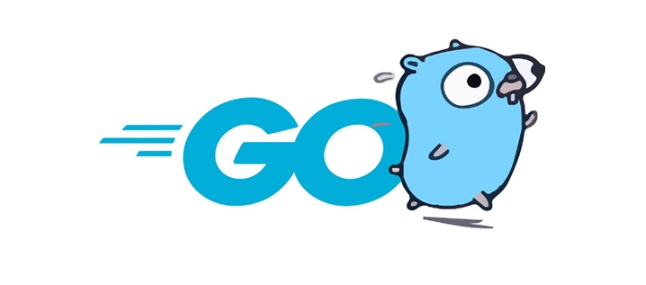Go State Machine Implementations for Business Logic
Jul 20, 2025 am 02:23 AMState machines are very practical in business logic development, and are especially suitable for handling scenarios with complex state transitions and clear rules. 1. Use state enumeration and conversion tables to achieve clear and easy-to-maintain state management by defining State and Event types and conversion relationships; 2. Encapsulate state machine logic into the structure to improve reusability and testing, and is suitable for multiple business objects such as orders and articles; 3. Add hooks and action execution, perform side-effect operations before and after state transitions, and enhance flexibility; 4. Use third-party libraries such as looplab/fsm, facebookgo/clock, etc. to simplify development, improve stability and maintainability.

In business logic development, State Machine is a very practical design pattern, especially suitable for dealing with scenarios where state transitions are complex and rules are clear. Go language is very suitable for implementing state machines with its concise syntax and efficient concurrency processing capabilities. Here are some practical methods and suggestions.

1. Use state enumeration and conversion tables
The core of a state machine lies in the conversion relationship between state (State) and event (Event). The most common way is to use enumerations to represent states, and use maps or structures to represent conversion rules between states.
For example, you can define it like this:

type State string
type Event string
const (
StateDraft State = "draft"
StatePublished State = "published"
StateArchived State = "archived"
)
const (
EventPublish Event = "publish"
EventArchive Event = "archive"
)Then define a conversion table:
var transitions = map[State]map[Event]State{
StateDraft: {
EventPublish: StatePublished,
},
StatePublished: {
EventArchive: StateArchived,
},
}The advantage of this design is that it is clear, easy to maintain, and also facilitates checksum expansion.

2. Encapsulate state machine logic
For easier multiplexing and testing, it is recommended to encapsulate state machine logic into a structure. For example:
type FSM struct {
currentState State
transitions map[State]map[Event]State
}
func (f *FSM) Transition(event Event) error {
nextState, ok := f.transitions[f.currentState][event]
if !ok {
return fmt.Errorf("invalid transition from %s with event %s", f.currentState, event)
}
f.currentState = nextState
return nil
}
func (f *FSM) CurrentState() State {
return f.currentState
}This method allows you to reuse state machine logic in different business objects, such as orders, articles, tasks, etc.
3. Add hooks and actions to execute
Sometimes, state transitions are not just "switching states", but also require some side effects, such as recording logs, sending notifications, calling other services, etc. You can consider adding hook functions before and after the state transition.
For example:
type FSM struct {
currentState State
transitions map[State]map[Event]State
onEnter map[State][]func()
onExit map[State][]func()
}Then perform the corresponding action during the conversion:
func (f *FSM) Transition(event Event) error {
nextState, ok := f.transitions[f.currentState][event]
if !ok {
return fmt.Errorf("invalid transition")
}
// Execute the exit action for _, hook := range f.onExit[f.currentState] {
hook()
}
// Switch state f.currentState = nextState
// Execute the entry action for _, hook := range f.onEnter[f.currentState] {
hook()
}
return nil
}This method can make your state machine more flexible and more suitable for complex business scenarios.
4. Use third-party libraries to simplify implementation
If you don't want to start from scratch, the Go community also has some good state libraries, such as:
- github.com/looplab/fsm : Fully functions, supporting events, hooks, concurrent control, etc.
- github.com/facebookgo/clock : Suitable for state airport views that require time control.
- go.uber.org/fx : Although it is not a special state library, it is also convenient to combine state machine logic in dependency injection.
Using these libraries can save development time while also achieving better stability and maintainability.
Basically that's it. State machines are very practical in business logic, especially in scenarios such as orders, approval processes, and content life cycles. It is not complicated to implement with Go, but you need to pay attention to the integrity and scalability of state transitions.
The above is the detailed content of Go State Machine Implementations for Business Logic. For more information, please follow other related articles on the PHP Chinese website!

Hot AI Tools

Undress AI Tool
Undress images for free

Undresser.AI Undress
AI-powered app for creating realistic nude photos

AI Clothes Remover
Online AI tool for removing clothes from photos.

Clothoff.io
AI clothes remover

Video Face Swap
Swap faces in any video effortlessly with our completely free AI face swap tool!

Hot Article

Hot Tools

Notepad++7.3.1
Easy-to-use and free code editor

SublimeText3 Chinese version
Chinese version, very easy to use

Zend Studio 13.0.1
Powerful PHP integrated development environment

Dreamweaver CS6
Visual web development tools

SublimeText3 Mac version
God-level code editing software (SublimeText3)
 How does the switch statement work in Go?
Jul 30, 2025 am 05:11 AM
How does the switch statement work in Go?
Jul 30, 2025 am 05:11 AM
Go's switch statement will not be executed throughout the process by default and will automatically exit after matching the first condition. 1. Switch starts with a keyword and can carry one or no value; 2. Case matches from top to bottom in order, only the first match is run; 3. Multiple conditions can be listed by commas to match the same case; 4. There is no need to manually add break, but can be forced through; 5.default is used for unmatched cases, usually placed at the end.
 Using the Context Package in Go for Cancellation and Timeouts
Jul 29, 2025 am 04:08 AM
Using the Context Package in Go for Cancellation and Timeouts
Jul 29, 2025 am 04:08 AM
Usecontexttopropagatecancellationanddeadlinesacrossgoroutines,enablingcooperativecancellationinHTTPservers,backgroundtasks,andchainedcalls.2.Withcontext.WithCancel(),createacancellablecontextandcallcancel()tosignaltermination,alwaysdeferringcancel()t
 Building Performant Go Clients for Third-Party APIs
Jul 30, 2025 am 01:09 AM
Building Performant Go Clients for Third-Party APIs
Jul 30, 2025 am 01:09 AM
Use a dedicated and reasonably configured HTTP client to set timeout and connection pools to improve performance and resource utilization; 2. Implement a retry mechanism with exponential backoff and jitter, only retry for 5xx, network errors and 429 status codes, and comply with Retry-After headers; 3. Use caches for static data such as user information (such as sync.Map or Redis), set reasonable TTL to avoid repeated requests; 4. Use semaphore or rate.Limiter to limit concurrency and request rates to prevent current limit or blocking; 5. Encapsulate the API as an interface to facilitate testing, mocking, and adding logs, tracking and other middleware; 6. Monitor request duration, error rate, status code and retry times through structured logs and indicators, combined with Op
 how to properly copy a slice in go
Jul 30, 2025 am 01:28 AM
how to properly copy a slice in go
Jul 30, 2025 am 01:28 AM
To correctly copy slices in Go, you must create a new underlying array instead of directly assigning values; 1. Use make and copy functions: dst:=make([]T,len(src));copy(dst,src); 2. Use append and nil slices: dst:=append([]T(nil),src...); both methods can realize element-level copying, avoid sharing the underlying array, and ensure that modifications do not affect each other. Direct assignment of dst=src will cause both to refer to the same array and are not real copying.
 How to use template.ParseFS with go embed?
Jul 30, 2025 am 12:35 AM
How to use template.ParseFS with go embed?
Jul 30, 2025 am 12:35 AM
Use the template.ParseFS and embed package to compile HTML templates into binary files. 1. Import the embed package and embed the template file into the embed.FS variable with //go:embedtemplates/.html; 2. Call template.Must(template.ParseFS(templateFS,"templates/.html")))) to parse all matching template files; 3. Render the specified in the HTTP processor through tmpl.ExecuteTemplate(w,"home.html", nil)
 Working with Time and Dates in Go
Jul 30, 2025 am 02:51 AM
Working with Time and Dates in Go
Jul 30, 2025 am 02:51 AM
Go uses time.Time structure to process dates and times, 1. Format and parse the reference time "2006-01-0215:04:05" corresponding to "MonJan215:04:05MST2006", 2. Use time.Date(year, month, day, hour, min, sec, nsec, loc) to create the date and specify the time zone such as time.UTC, 3. Time zone processing uses time.LoadLocation to load the position and use time.ParseInLocation to parse the time with time zone, 4. Time operation uses Add, AddDate and Sub methods to add and subtract and calculate the interval.
 What are runes in Go?
Jul 31, 2025 am 02:15 AM
What are runes in Go?
Jul 31, 2025 am 02:15 AM
AruneinGoisaUnicodecodepointrepresentedasanint32,usedtocorrectlyhandleinternationalcharacters;1.Userunesinsteadofbytestoavoidsplittingmulti-byteUnicodecharacters;2.Loopoverstringswithrangetogetrunes,notbytes;3.Convertastringto[]runetosafelymanipulate
 How to import a local package in Go?
Jul 30, 2025 am 04:47 AM
How to import a local package in Go?
Jul 30, 2025 am 04:47 AM
To import local packages correctly, you need to use the Go module and follow the principle of matching directory structure with import paths. 1. Use gomodinit to initialize the module, such as gomodinitexample.com/myproject; 2. Place the local package in a subdirectory, such as mypkg/utils.go, and the package is declared as packagemypkg; 3. Import it in main.go through the full module path, such as import "example.com/myproject/mypkg"; 4. Avoid relative import, path mismatch or naming conflicts; 5. Use replace directive for packages outside the module. Just make sure the module is initialized






